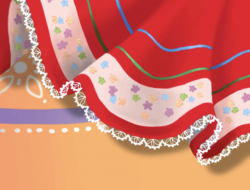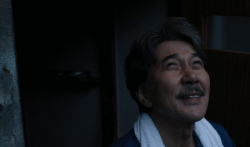The National Gallery’s new photography exhibit, which displays British calotype photography from 1840 to 1860, may be called “Impressed by Light,” but whether you’ll be impressed by the collection is up for debate. Though the 120 photographs presented in the exhibit are historically important as some of the first photographs in British history, their subject matter is often fairly unadventurous and most of the photos are too small and modest to make an impression on our minds, which have been conditioned with flashier modern work.
The exhibit begins with the work of William Henry Fox Talbot, whose early calotype photography relied on negatives made of paper, and shows those artists that adopted his process in the years following his first prints.
Among those Talbot influenced was Benjamin Brecknell Turner, who took his camera to the Crystal Palace in Hyde Park in 1852, and photographed an interlocking of tree branches and iron framework that served as a poignant reflection on the collision of nature and technology. Like the other photographs displayed in the exhibit, it was made from a negative the same size as the final print because enlargers were not yet widely available in the mid-nineteenth century.
In order to take big pictures, then, massive cameras weighing 500 to 700 pounds were required. Due to their rarity, large photographs, especially of outdoor locales, were valued highly during the 1850s. Among the most impressive of those on display are Horatio Ross’s natural landscapes, whose level of detail and contrast far surpassed those of other early photographs.
Roger Fenton’s photographs of Moscow are historically important—never before had Russia’s secret city been photographed for Western viewing—and stylish, showcasing the domed roofs of that city’s biggest buildings. Those British photographers that ventured off the British isles into India, though, managed to capture the foreign cultures they saw even more successfully than Fenton.
Charles Moravia’s “The Crystal Throne” depicts the interior of a palace in a well-framed, low-contrast piece, and John Murray’s “Suttee Ghat” shows the site of one of India’s biggest mutinies against the British, with two small figures in the foreground conveying a sense of detachment with their surroundings. Murray’s triptych of the Taj Mahal is also notable: comprised of three adjacent photographs with a clean symmetry, it is arguably the highlight of the exhibition, even if the image is a familiar one today.
Unfortunately, much of the exhibit is littered with tiny photographs with unimpressive techniques and no ‘wow’ factor. If you’re at the National Gallery, the exhibit is worth checking out for a few minutes because of its historical importance and the few excellent photographs. But unless you are a photography fanatic, rabidly interested in the earliest roots of the modern process, “Impressed by Light” is too littered with lesser pieces to necessitate its own trip.
“Impressed by Light” will run at the National Gallery until May 4.




